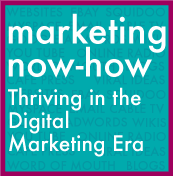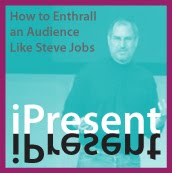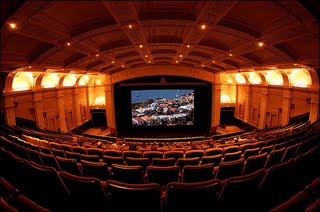 Have you ever wondered where the word ‘movie’ comes from?
Have you ever wondered where the word ‘movie’ comes from?
Usually, when something new is invented, it takes the name of some thing that exists, something that is already familiar to us.
For example, the internet was once called an ‘information superhighway’.
The ‘car’ was the ‘motor car’ which came from ‘motor carriage’. Before that, the ‘motor carriage’ was called a ‘horseless carriage’. And, before that we had the ‘horse and carriage’.
This extension of existing terminology is an effective strategy because this is how our brains work. We literally connect new information to existing neurons.
The term ‘movie’ is short hand for ‘moving pictures’ which gives us a clue to where this technology originated.The invention of the camera gave birth to ‘still images’. In contrast, when a series of images is strung together in rapid succession we get the illusion of ‘pictures moving’. As a kid, you may have created your own animation this way. Perhaps you drew a series of stick figure on cards and then flicked them in sequence to make your figure appear to move. So what do a ‘blog’ and a ‘movie’ have in common?For starters, the way these two words got their name.
 Each one is a shortened version of some other thing. ‘Movie’ is short for ‘moving pictures’. And, the word ‘blog’ is short for ‘web log’. What’s a web log? It’s a list of entries similar to a diary, posted regularly on the internet. Next up, and more usefully, movies and blogs are the direct result of acceleration.
Each one is a shortened version of some other thing. ‘Movie’ is short for ‘moving pictures’. And, the word ‘blog’ is short for ‘web log’. What’s a web log? It’s a list of entries similar to a diary, posted regularly on the internet. Next up, and more usefully, movies and blogs are the direct result of acceleration.
This is a really important distinction because it puts blogs into context. It tells us what they are in relation to websites. It also points to how we can get the best from them, and even a possible future of the internet.The unofficial patron saint of Wired Magazine, 1960’s media guru Marshall McLuhan, flagged that when things speed up, the effect of the media changes.
This means that the way the media operates and performs alters, and this significantly changes its impact on us in our day to day lives. His insight is ably demonstrated by the shift from still (photography) to moving images (film). They are two different media with two different sets of results.
Historically, photographs have encouraged posing and have promoted the artificial smile, whilst movies have warped our sense of time, and allowed our fantasies to come to life. Today, photography and film live as overlapping, yet distinct industries. And now, here’s the clincher. Websites and blogs appear to be headed for a similar future: overlapping yet distinct. Less than ten years ago, you needed technical skill to create, or update even the simplest website. It was also expensive because you had to pay a web designer by the hour to create or update your site.
The cost and the time involved prohibited people from posting updates more than once or twice a month. Now, after a decade of internet development we have seen lightning changes. The ease and accessibility of blogging allows anyone with minimal skills to add content to the World Wide Web quickly and with minimal effort. Just ask any school kid!
Technically speaking, blogs are a content management system. The key to its simplicity is that it has a number of automated features making it dead easy to update a website. This automation enables a DIY approach to blogging. And so it follows, that because anyone and everyone can do it, DIY blogging accelerates the frequency that anyone can add a post. And this is the reason why more than 75 million blogs have appeared in the last ten years.
Whilst quicker and easier may seem like a modest change, when the acceleration happens at the right speed, the net (sic!) effect changes the game completely.
For example, movies are displayed at 24 frames per second. This speed is quick enough for the brain to process the individual frames as a single, flowing, moving picture. Any slower and the effect doesn’t work. All you see is the individual frames.
And so it is with the speed of blogging. When we speed up the overall output of the world wide web, and invite instant input from anyone-anywhere-anytime, we change the communication from a one-way channel to a shared to-and-fro conversation.
This is the fundamental shift from the one-way web to our dynamic, interactive, social Web 2.0.
Acceleration of interaction means that information appears to flow, some what like a face-to-face conversation.
In the same way that moving pictures appear to be real, online conversations now appear to flow quickly, easily and effortlessly.
This illusory perception changes the nature of the internet.
So, just as a movie is an illusion created by still images going faster, a snapshot of the future of the web can be captured in one word: ‘faster’.
And ‘faster’ fosters interaction. Faster means quicker access-speed and it also means that we’ll access information more often.
For example, handheld internet devices like the iPhone and the Blackberry enable us to be constantly connected.
This speed-up of the web already has an offspring; it’s given birth to microblogging.
What’s microblogging? It’s a facility on a website, that enables short, one or two sentence comments to be posted quickly and often; by the minute, hourly, or daily. Think Twitter and Facebook.
Microblogging can be whatever, and whenever, you and your friends/community want it to be.
From a community building point of view, microblogs are beginning to overtake blogs.
It’s confirmation that we now live in a short, sharp, instant, impulsive world. Get ready for a faster future.
Blogs will still continue to be important, of course. Think of them as journalism for everyone - longer articles, more detail and more opinion.
To compare blogs and microblogs to traditional web pages, or their forebears the magazine article, is inaccurate.
Better, to compare blogs/microblogs to the phenomenon of teenagers (and increasingly their parents) texting each other throughout the day. Are you getting the picture here?
Can you ‘C’ the fourfold future: Constantly, Connected, Conversational Communities.
And here’s an interesting spin-off from blogging/microblogging: the way we listen has changed.
No one wants to listen to a biased, subjective, one-way, sales pitch (rant!) any longer. We’d all far prefer to join in a conversation and, be part of a community in which we can actively participate. It’s more inclusive, and that’s important.
 This dramatic shift in the way we communicate was flagged by Seth Godin in Meatball Sundae (see Book Rapper Issue: Marketing Now-How).
This dramatic shift in the way we communicate was flagged by Seth Godin in Meatball Sundae (see Book Rapper Issue: Marketing Now-How).
We fragile human beings thrive on connection and inclusion. And now, thanks to our exhilarating digital media, these basic human needs are easier to meet across all social and cultural groups.
Anyone and everyone can join in.
This is one small step for the web; one giant leap for mankind.
The future is looking bright!Just in case you’re starting to panic, rest assured that, like still photographs, static websites will continue to play a major role in building your brand and selling your product.
However, to fail to include a fast-response mechanism, like a blog, on all your websites would be to misunderstand the Web 2.0 medium, and how to ride its evolutionary wave.
In this Book Rapper issue we dive into the intoxicating phenomena that is the blog medium, and tease out how you and your business can profit from it. Oh, and remember to have fun!
Labels: Blogging, Blogs, Marshall McLuhan, Microblogging, Movies, Twitter
 t does it mean to be live? Part 3
t does it mean to be live? Part 3 o becomes a place to hang out for various reasons…
o becomes a place to hang out for various reasons…



